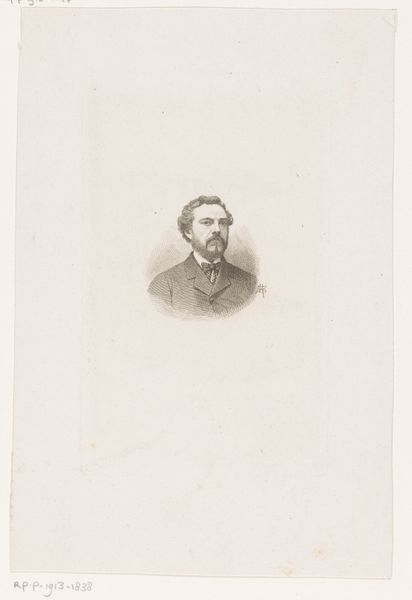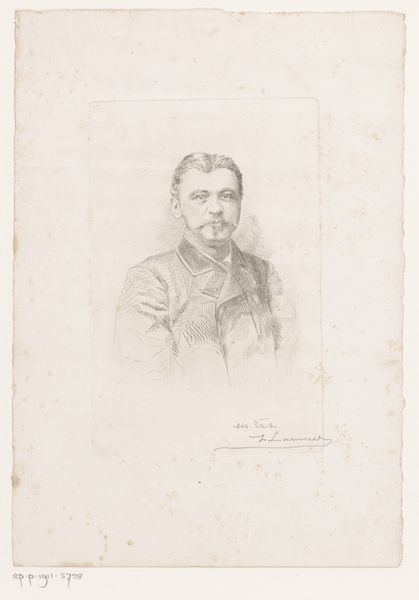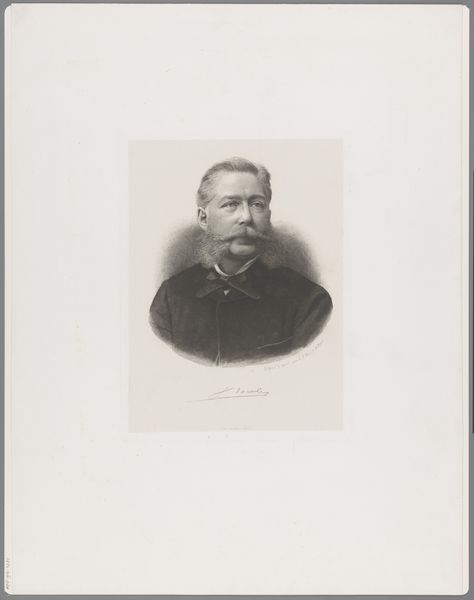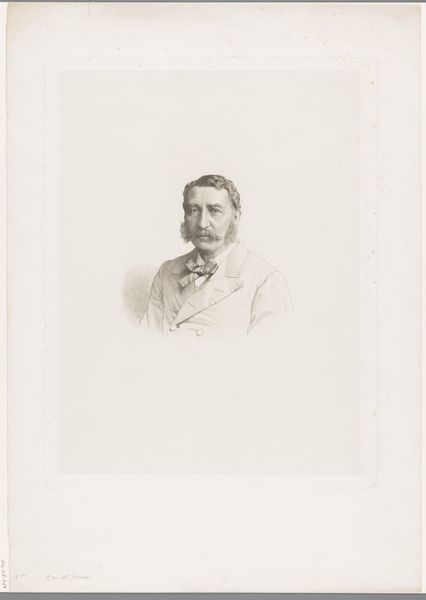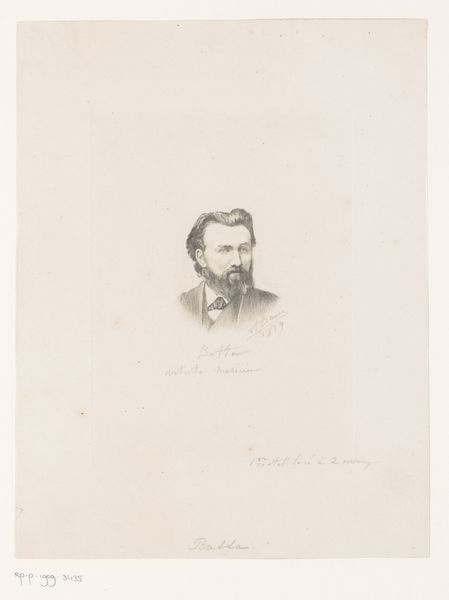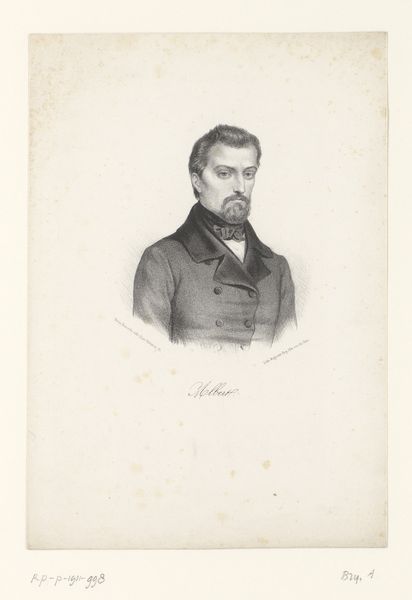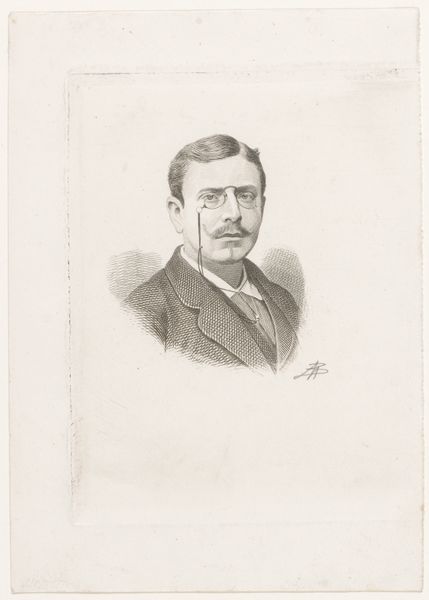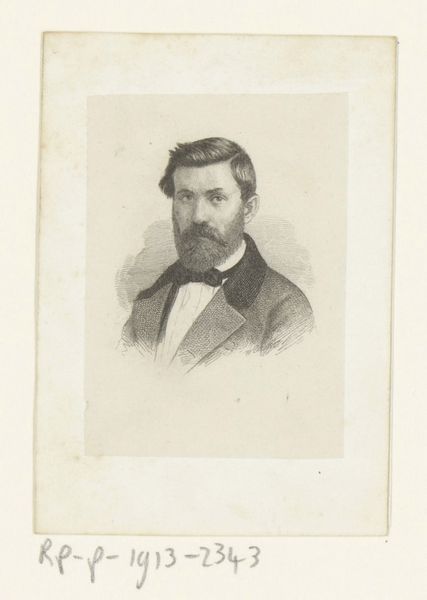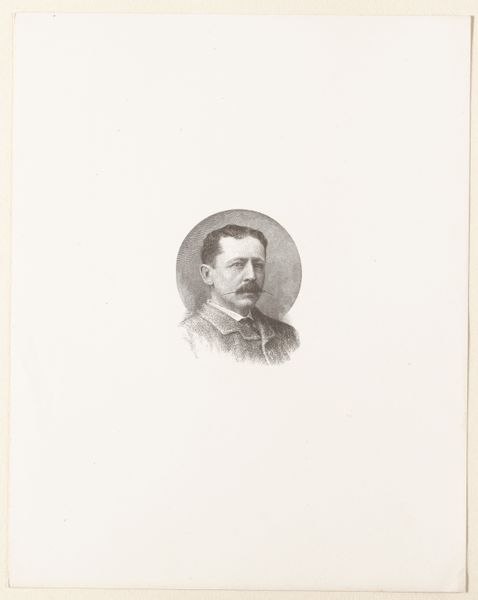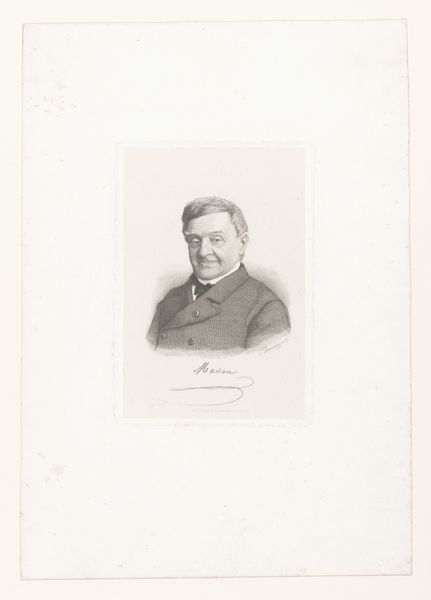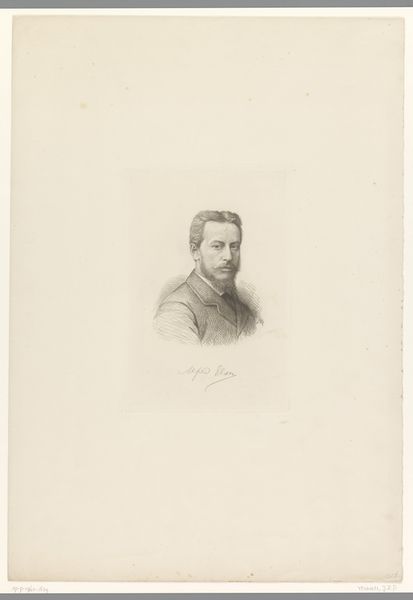
print, engraving
#
portrait
#
light pencil work
# print
#
old engraving style
#
pencil drawing
#
academic-art
#
engraving
#
realism
Dimensions: height 175 mm, width 117 mm
Copyright: Rijks Museum: Open Domain
Curator: This engraving, entitled "Portret van een onbekende man," is attributed to Frans Lauwers, and its creation falls somewhere between 1864 and 1911. What’s your immediate take on this work? Editor: The fineness of the engraving is striking. Look at how that texture defines form. The subject’s jacket, the background, all built up with precise strokes. You feel the labor involved, a tangible connection to the artist's hand and the tools. Curator: Absolutely. That craftsmanship was highly valued in the academic art circles of the late 19th century. Portraits like these served a social function, establishing identity and status. The proliferation of engraved portraits was also connected to wider society – cheap, accessible copies in papers. Editor: Indeed, but this level of detail… it speaks to a different market than those mass-produced prints. The sitter’s clothes, though fairly modest, project quiet prosperity, and the meticulous engraving would've added to the piece’s cost. Someone made a careful choice here about how to represent themselves. Curator: Precisely. Consider the socio-political implications. Such detailed portraiture reaffirmed societal hierarchies, conveying the sitter's place within a specific social strata. It's a visualization of the era's power structures, especially significant as photography became increasingly common. These engraved portraits weren’t merely representations but carefully curated constructions of self. Editor: I'm also wondering about Lauwers’ involvement, too. Is this portrait work or something commissioned? That would surely also shift meaning if the print itself functioned more as a record than something made with particular flair. The artist as laborer rather than visionary is important. Curator: Good point. It complicates any easy reading of the artwork as straightforward class performance. And who keeps these engravings? How does the meaning shift as these prints are kept? Does the function of a portrait change when the subject passes away? Editor: It's like the piece continues to acquire layers, each adding context to that original exchange between artist and subject. Considering it this way reminds of the artwork’s role in mediating material and historical narratives. Curator: Absolutely, viewing this piece reminds of that historical complexity of what appears, on the surface, to be a simple portrait. Editor: Indeed, seeing these works as something that’s both of and against society helps makes this era so captivating.
Comments
No comments
Be the first to comment and join the conversation on the ultimate creative platform.
